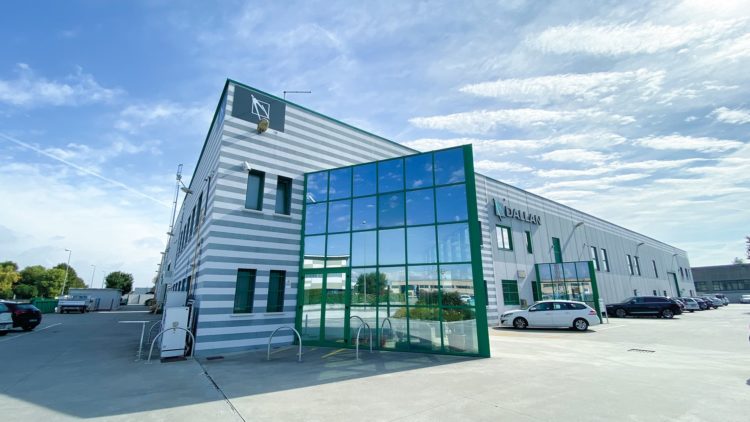How jobs in metalworking companies will change after Covid-19

Have you ever wondered how we will work once the emergency is over?
Today we are experiencing a moment of exceptional gravity, above all for the health and human crisis we are going through.
As entrepreneurs, the arrival of Covid-19 has challenged budgets, work schedules, priorities and investments.
Even in 2008, when there was the last serious financial crisis, some dogmas collapsed that had kept up the previous business models: the ever-growing real estate market, house prices that could only increase, the banks that they could not fail … and so on.
Now, here we are learning that our companies, even those that are well structured and capitalized and with solid business models, must also deal with events beyond their control.
Among the latest serious epidemics, we remember Sars in 2003, Mers in 2012, Ebola in 2014 that had not reached Europe. A virus with a slightly longer incubation time was enough to question our way of living and working.
After 2008, the most fragile companies had to close, while the more solid and capitalized ones not only survived, but also developed “antibodies” for that specific threat, which was then exclusively financial in nature.
“A good crisis must never be wasted,” said Winston Churchill.
Now, after 2020, I believe that companies will have to develop “antibodies” against the threat of a pandemic that could jeopardize a company’s market or the ability to produce.
There are many measures that companies in our mechanical sector will have to put in place.
I am talking to many of my customers and suppliers, and I understand that the problems they feel most are two: first of all, the protection of the health of their people, then the safety and sustainability of the company’s business in the long term.
Be Smart: a new paradigm in business

We quickly experienced how much of the office work can be organized in a smart working mode. We do not know if it will be possible to return to work in offices with the same number of people inside. We will probably come back a little at a time, and we could even have half the staff who work – or can work – from home.
In fact, in this way many activities could even increase the staff employed, without the limitations given by the physical space of the offices.
Let’s think about schools: I see my children, who are attending lessons from home. If in the future the children attended half the time at home, half the classrooms could be enough for schools, with much less structure costs and more efficiency for the school system.
We will probably cut back on some work trips (not strictly necessary), after we have learned what can be done with meetings via Skype, Zoom, WebEx, TeamViewer and so on…
The fact remains that, in production companies such as ours, the goods must in any case be received, manufactured and delivered. We will therefore have to change our work habits, use different entry and exit times, dilute the presence inside the cafeterias. We will get into the habit of wearing masks always, and probably also gloves and visors. Also, the frequency of cleaning and sanitizing will increase across all shifts.
At least for a first period of time, the “social distance” between people will increase, even in production. Many meeting-related processes, or internal paper orders, will be replaced by electronic orders. It will be necessary to rationalize processes as much as possible in order to keep people at a distance, introducing intelligent packaging and logistics systems, and rationalizing production cycles. If a company has not yet made the transition to Industry 4.0, this moment will give an extraordinary boost of motivation to do so.
Companies using production plants will become increasingly autonomous in the management of maintenance and repairs, and remote assistance and remote support services will be increasingly used. Staffing & training for these critical production needs will become even more necessary.
In this context, the ease of use of the systems, and the simplicity of installation, will be a great asset for the manufacturers of systems. With these tools, for example, in Dallan we are already remotely activating the production of new machine systems, from Europe to New Zealand.
With these measures, we will protect the health of our people. And by doing this, we will also protect the health and safety of our companies as entrepreneurs by protecting the skills of each of our employees.
To remain sustainable in the business, production companies will also have to work hard on the efficiency of their processes. Being efficient means producing the same result, using less resources.
The resources that interest us are: raw material, energy, labor, time.
The Revolution of Efficiency

In recent months, I have been working on a book that collects the experiences of my twenty years of work and which is titled “The Revolution of Efficiency”. I have analyzed (thanks to the testimonies of twenty of our client companies), the different ways in which a sheet metal working company can generate efficiency: therefore increasing profits and optimizing processes.
For example, there are companies that become more efficient in the use of the raw material, with machines that produce the same quantity and quality of product, also using 20% less raw material and up to 75% less energy.
The automation and flexibility of the production lines allow you to produce even faster, and with less staff physically in the production field, which again turns into increased safety for the operators. The operator also grows professionally as a maintenance expert and line manager. In this way, where previously four people were needed, now with one single operator it is possible to transform the coil into a finished product, packed and ready for shipment – as happens, for example, in the production lines of rolling shutters and drywall construction profiles.
I had wondered if it was appropriate to postpone the release of this book to next year. Instead, we have chosen to anticipate publication at the end of the summer, because it is exactly in these moments that companies have the time, the possibility and the need to analyze their processes and identify the points of improvement.
I also added, at the end of the book, a collection of useful management tools, which I have created over the years to calculate the hourly cost of the systems, the production cost of a sheet metal product, the payback of a system and much more.
I gladly put them at your disposal.
The Italian version of the book will be published by Aracne Editrice at the end of August: the release of the English version immediately after, and I will confirm it shortly.
Take care,
Andrea Dallan – C.E.O.
#BeSmart #StaySafe
